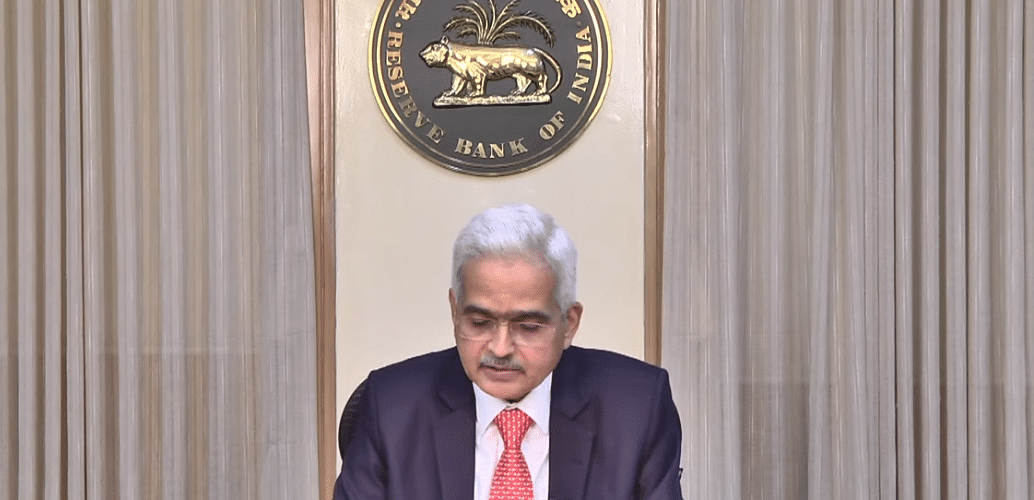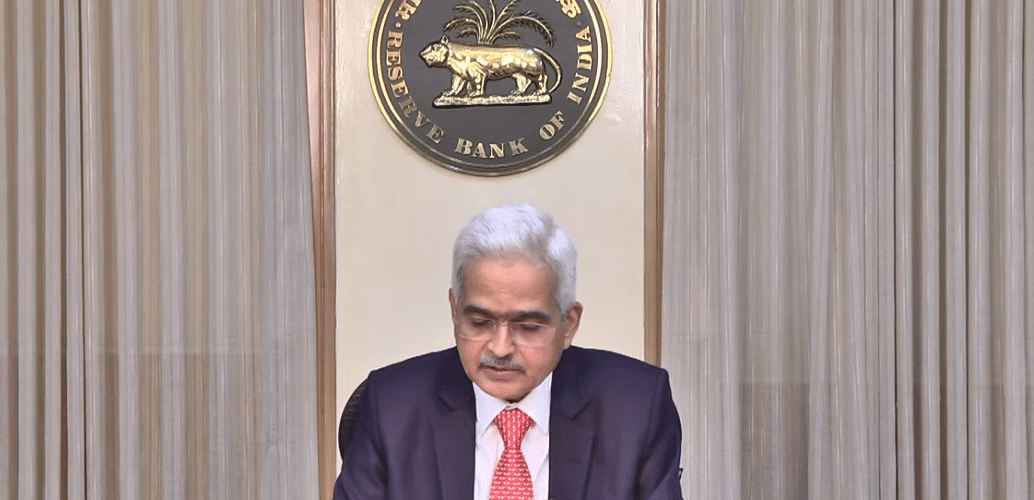
That's all for today readers! Thank you for tuning in to our coverage of the RBI MPC decisions. For more latest news visit www.deccanherald.com.
RBI MPC keeps repo rate unchanged at 4%, lowers FY23 growth forecast to 7.2%

The monetary policy committee held the lending rate, or the repo rate, at 4 per cent. The reverse repo rate, or the key borrowing rate, was also kept unchanged at 3.35 per cent. But the central bank said it would restore the width of the liquidity adjustment facility to 50 basis points, which was seen as a first step to move away from the ultra loose monetary policy embraced during the Covid-19 pandemic.
Key announcements made by Governor Shaktikanta Das
> Held-to-maturity limit to revert to 22% of banks' net demand and time liabilities in FY24.
> RBI also proposes a panel to review status of customer service at RBI-regulated entities.
> Cardless cash withdrawal will be made available at all bank branch and ATMs via UPI, to prevent frauds. To secure payment systems, propose guidelines for such operators.
> BBPS has seen rise in volumes, to encourage this further, the RBI has proposed to reduce networth requirement for such entities to Rs 25 crore against Rs 100 crore.
The SDF, MSF will be available from 5:30 pm till midnight all days of the week. Money market opening time restore to 9:00 am, which is the pre-pandemic time.
We are not hostage to any rule book, no option is off the table when goal is to safeguard the economy, says Das.
Robust rabi crop should support rural demand and pickup in contact-intensive services to help boost urban demand: Das
Das says that sharp pump prices may push inflation and edible oil prices are likely to remain at elevated level in near future.
Average CPI inflation projections for FY23:
> 6.3 % in April-June 2022
> 5.0% in July-September 2022
> 5.4% in October-December 2022
> 5.1% in January-March 2023.
India is caught in the cross-currents of multiple headwinds, says Das
India is caught in the cross-currents of multiple headwinds, says Das as he stresses that the approach needs to be cautious but proactive in mitigating the adverse impact on India's growth, inflation and financial conditions.
Indian economy is steadily reviving from pandemic-induced slowdown, says Das.
While the pandemic quickly morphed from a health crisis to one of life and livelihood, conflict in Europe has the potential to derail the global economy: RBI Governor Shaktikanta Das
Global economy has seen a tectonic shift, says Governor.
Escalating Russia-Ukraine war has cast shadow on economic outlook, says Shaktikanta Das.
Inflation is projected at 5.7% for FY23, says Das. He adds that owing to geo-political tensions any projection is fraught with risk.
Economy is confronted by new and humongous challenges: RBI Governor Shaktikanta Das
Real GDP growth for FY23 projected at 7.2%, says Das.
RBI actions have been nimble and well-timed, says Shaktikanta Das.
RBI keeps reverse repo rate unchanged at 3.35%
The RBI’s six-member monetary policy committee keeps the repo rate unchanged at 4 per cent on Friday. The central bank keeps the stance accommodative.
Watch the monetary policy decision announcement live here
RBI Governor Shaktikanta Das begins addressing the media on monetary policy committee's decisions. This is the first monetary policy for FY23.
Here are the key things to look out for
> Interest Rates andStance
> Outlook revision
> Government Borrowing
Governor Shaktikanta Das will announce the monetary policy decision shortly.
Equity indices edge up ahead of RBI rate decision
Equity benchmark indices opened higher on Friday ahead of an interest rate decision by the country's central bank, which has stuck to a loose monetary policy to support a post-pandemic economic recovery but is now faced with rising inflation.
The NSE Nifty 50 index was up 0.36 per cent at 17,701, while the S&P BSE Sensex rose 0.3 per cent to 59,212.42.
Ahead of the RBI MPC meet, Sensex rose over 200 points and Nifty was trading above 17,700.
RBI may extend rate pause, revise outlook
All economists surveyed by Bloomberg expect the RBI’s six-member monetary policy committee to hold the benchmark repurchase rate at 4 per cent on Friday, while just four out of 29 polled as of Thursday morning see a hike in the reverse repurchase rate -- a tool the RBI uses to remove excess cash from lenders.
RBI may bump up its 4.5% inflation forecast for current fiscal year
With inflation already running above the central bank’s 6 per centupper tolerance limit, the RBI is expected to bump up its 4.5 per centinflation forecast for the current fiscal year to factor in risks from higher global food and energy prices due to the war in Ukraine.
“In the April meeting, we expect the RBI to raise its inflation forecast and prepare markets for future changes via a revised forward guidance,” said Pranjul Bhandari, chief India economist at HSBC Holdings Plc. “Rate changes will likely follow in subsequent meetings.”
Since October 2019, the central bank has said it will “continue with the accommodative stance as long as it is necessary to revive growth,” adding from March 2020 a reference to Covid-19.
Keeping a lid on costs is crucial for Prime Minister Narendra Modi’s government as it seeks to boost spending on infrastructure, creating jobs and increasing productivity in the economy. Das’s speech will also be closely watched for any change in language that signals a beginning of the end of the current easing bias.
Investors will be looking for clarity on how the RBI - which acts as the government’s debt manager, in addition to its main role of maintaining price stability - plans to support the administration’s $189 billion debt program and keep the sovereign’s borrowing costs in check when faster global policy normalization is pushing yields higher.